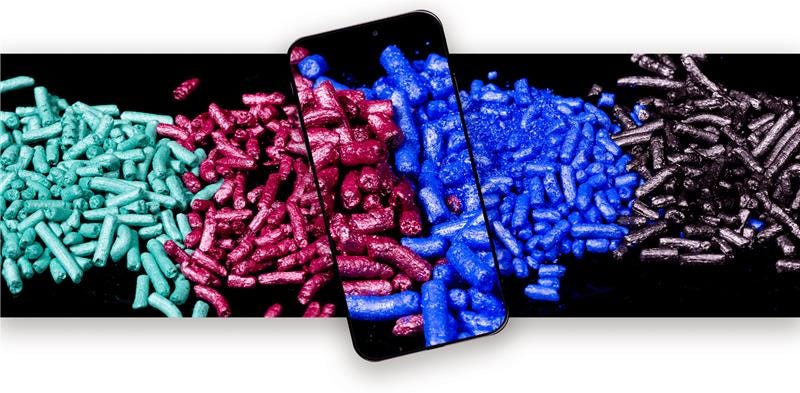The Rise of Silicone-Free Beauty: What It Means for Your Products
The demand for silicone-free beauty products is rapidly growing, with a 26% increase in product launches claiming "silicone-free" on packaging from 2019 to 2024. Additionally, 27% of U.S. consumers now base their purchasing decisions on ingredient transparency, prioritizing formulations free of silicones or allergens. This surge is fueled by the rising popularity of sustainable beauty, as brands and consumers alike seek alternatives that align with clean, eco-conscious values. These trends highlight the importance of innovative solutions, like Siclone SR-5, for brands looking to stay ahead in this evolving market.
What’s Driving the Silicone-Free Movement?
The shift towards silicone-free beauty products is propelled by several key factors:
Consumer Demand: A significant driver is the increasing consumer preference for clean and sustainable beauty solutions. Surveys indicate that 40.2% of consumers prioritize natural ingredients in their beauty products, with 17.6% valuing environmental respect.
This trend is further amplified by the popularity of the #CleanBeauty movement, which has garnered over 2.1 billion views on TikTok and 6.3 billion tags on Instagram as of October 2023.
Regulatory Changes: Regulatory bodies are imposing stricter controls on certain silicones due to environmental concerns. For instance, the European Commission's Regulation (EU) 2024/1328, effective from June 6, 2024, restricts the use of Cyclotetrasiloxane (D4), Cyclopentasiloxane (D5), and Cyclohexasiloxane (D6) in cosmetic products.
These measures address the environmental risks associated with these substances, particularly their persistence and bioaccumulation in aquatic environments.
Market Impact: The convergence of consumer demand and regulatory actions is reshaping the beauty industry. Brands are increasingly formulating products without silicones to align with consumer expectations and comply with regulations. This shift is fostering innovation, leading to the development of alternative ingredients that maintain product performance while adhering to clean beauty standards. Consequently, the market is witnessing a rise in silicone-free product lines, reflecting a broader commitment to sustainability and transparency.
The Challenges of Going Silicone-Free
Transitioning to silicone-free formulations presents several challenges for cosmetic chemists:
Performance Concerns: Silicones are valued for imparting desirable sensory attributes such as smoothness, spreadability, and a non-greasy finish. They also enhance product stability and longevity. Replacing silicones without compromising these qualities requires careful selection of alternative ingredients.
Formulation Challenges: Silicones contribute to the efficacy of various products, including moisturizers, hair conditioners, and color cosmetics. Identifying substitutes that replicate these functions can be complex, as alternatives may not seamlessly integrate into existing formulations.
Consumer Perception: While there's a growing demand for silicone-free products, some consumers associate silicones with premium quality and performance. Ensuring that silicone-free alternatives meet these expectations is crucial to maintain consumer satisfaction.
Addressing these challenges necessitates innovative approaches and thorough testing to develop silicone-free products that deliver comparable performance and appeal.
Siclone SR-5: A Game-Changer in Silicone-Free Formulations
In response to the growing demand for silicone-free beauty products, Siclone® SR-5 has emerged as a pivotal ingredient, offering formulators a high-performance alternative to traditional silicones. Comprising a blend of hydrocarbons, including isohexadecane, isododecane, and C13-15 alkanes, Siclone® SR-5 replicates the desirable properties of cyclopentasiloxane (D5) without the associated environmental and regulatory concerns.
Key Properties
- Volatility and Sensory Experience: Siclone® SR-5 exhibits volatility and sensory characteristics comparable to D5, providing formulations with excellent slip, cushion, and a smooth, dry finish.
- Versatility in Formulation: This ingredient is suitable for a wide range of personal care applications, including skincare, haircare, color cosmetics, and antiperspirants. It can function as the sole oil phase in emulsions, serve as a binder in pressed powders, and is compatible with anhydrous formulations.
- Compatibility and Stability: Siclone® SR-5 is compatible with various materials such as HDPE, glass, steel, Viton, and Teflon, ensuring stability across different packaging options. However, it is incompatible with low-density polyethylene, polypropylene, and polystyrene.
Sustainability and Market Alignment
Aligning with the clean beauty movement, Siclone® SR-5 supports "silicone-free" and "oil-free" claims, catering to consumers seeking environmentally conscious and transparent beauty products. Its hydrocarbon-based composition addresses environmental concerns associated with silicones, positioning it as a sustainable alternative.
By integrating Siclone® SR-5 into formulations, brands can innovate within the silicone-free space, delivering products that meet consumer expectations for performance and sustainability.
Why Now is the Time to Innovate with Silicone Alternatives
The beauty industry is experiencing a significant shift as consumers increasingly seek products that align with their health and environmental values. This movement is characterized by a growing demand for clean beauty, sustainability, and ingredient transparency, leading many to question the use of traditional components like silicones in their personal care routines.
Consumer Demand:
- Clean Beauty: The clean beauty sector has seen substantial growth, with biodegradable beauty and personal care products experiencing a 22% increase in sales, and vegan products showing a 33% rise.
- Sustainability: Consumers are gravitating towards eco-friendly products, with a notable 18% increase in demand for plastic-free beauty items between 2021 and 2022.
The Conscious Insider - Transparency: There is a heightened awareness of ingredient safety and environmental impact, prompting individuals to prefer products free from potentially harmful substances, including certain silicones.
Clinikally
Regulatory Changes:
Regulatory bodies, particularly in the European Union, have implemented bans on specific silicones like cyclomethicones due to environmental concerns. These actions have compelled manufacturers to seek alternative ingredients that comply with new standards.
Market Impact:
The convergence of consumer preferences and regulatory measures is reshaping the beauty industry. Brands are innovating to develop silicone-free formulations that meet consumer expectations for performance and align with ethical and environmental standards. This shift presents an opportunity for companies to lead in the evolving market by offering products that cater to the demand for clean and sustainable beauty solutions.


